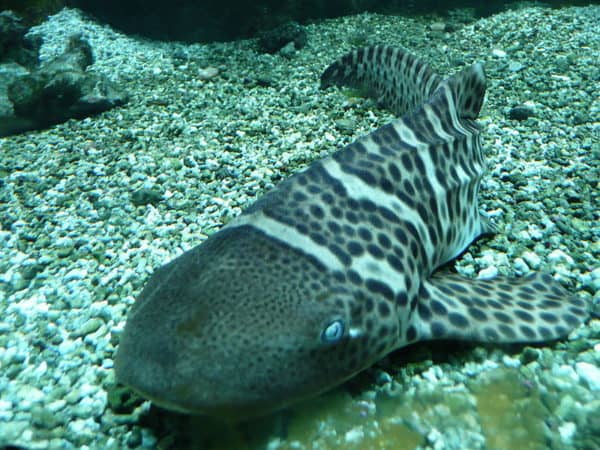
 A zebra shark producing offspring in captivity is not that unusual, but when it happens without the presence of male sperm, well, people take notice.
A zebra shark producing offspring in captivity is not that unusual, but when it happens without the presence of male sperm, well, people take notice.
As reported in a new paper published in the journal Scientific Reports, at the Reef HQ Aquarium in Townsville, Australia, a zebra shark named Leonie hatched three eggs despite having no access to a mating partner for the last three mating seasons.
Although previous cases have been noted of sharks reproducing asexually, through a process known as parthenogenesis, those were instances where the female shark had no exposure to males during their whole reproductive lifetime. Not so for Leonie, who had already had pups with a male zebra shark up until 2013, thereby making this the first documented case of a shark switching from sexual to asexual reproduction.
“We thought she could be storing sperm; but when we tested the pups and the possible parent sharks using DNA fingerprinting, we found they only had cells from Leonie,” said University of Queensland biologist Christine Dudgeon, co-author of the study, in a statement.
Found in the warm waters of the Indo-Pacific region, the zebra shark is naturally a bottom-dweller, with a blunt nose and cylindrical body. Confusingly, in Australia the zebra shark is called the leopard shark yet it’s a different species from the leopard shark found off much of the west coast of North America (though not as far north as Canada). Zebra sharks reach maturity at around seven years of age and can live to over 35 years of age in captivity.
Zebra sharks have been known to reproduce parthenogenetically, as was observed in 2011 at the Dubai aquarium, but in that case the animal had had no history of sexual reproduction. Why Leonie chose to ‘go it alone’ is not clear, although researchers say that it likely comes down to adaptation.
“Leonie adapted to her circumstances, and we believe she switched because she lost her mate,” Dudgeon said. “What we want to know now is, could this occur in the wild, and, if so, how often does it?”
Though asexual reproduction is a widely used method of producing offspring (for example, it’s how bacteria, many species of worms and insects, plants, and jellyfish all reproduce), the process is rare for vertebrates. In recent years, however, scientists have been seeing it more often – not because it’s a growing trend but simply because the switch between sexual to asexual reproduction hadn’t been studied, as was the case with Leonie.
“One reason why we haven’t seen it before could be because we haven’t been looking for it,” says Dudgeon. “It might be happening in the wild but it’s never been recorded in this species before.”
Parthenogenesis, which literally means “virgin birth,” is unlike other forms of asexual reproduction in that a gamete or sex cell is still involved. The process takes one of two forms,
apomixis, where a female sex cell replicates by mitosis, effectively cloning itself, or by automixis, the process used in Leonie’s case, where sex cells are produced by meiosis, which usually makes for one larger egg cell and one smaller cell called polar bodies that normally degrades. In the case of adaptive parthenogenesis, however, the egg cell fuses with one of the polar bodies, thereby doubling its genetic material.
Leave a Reply
You must be logged in to post a comment.




 Share
Share Tweet
Tweet Share
Share




Comment